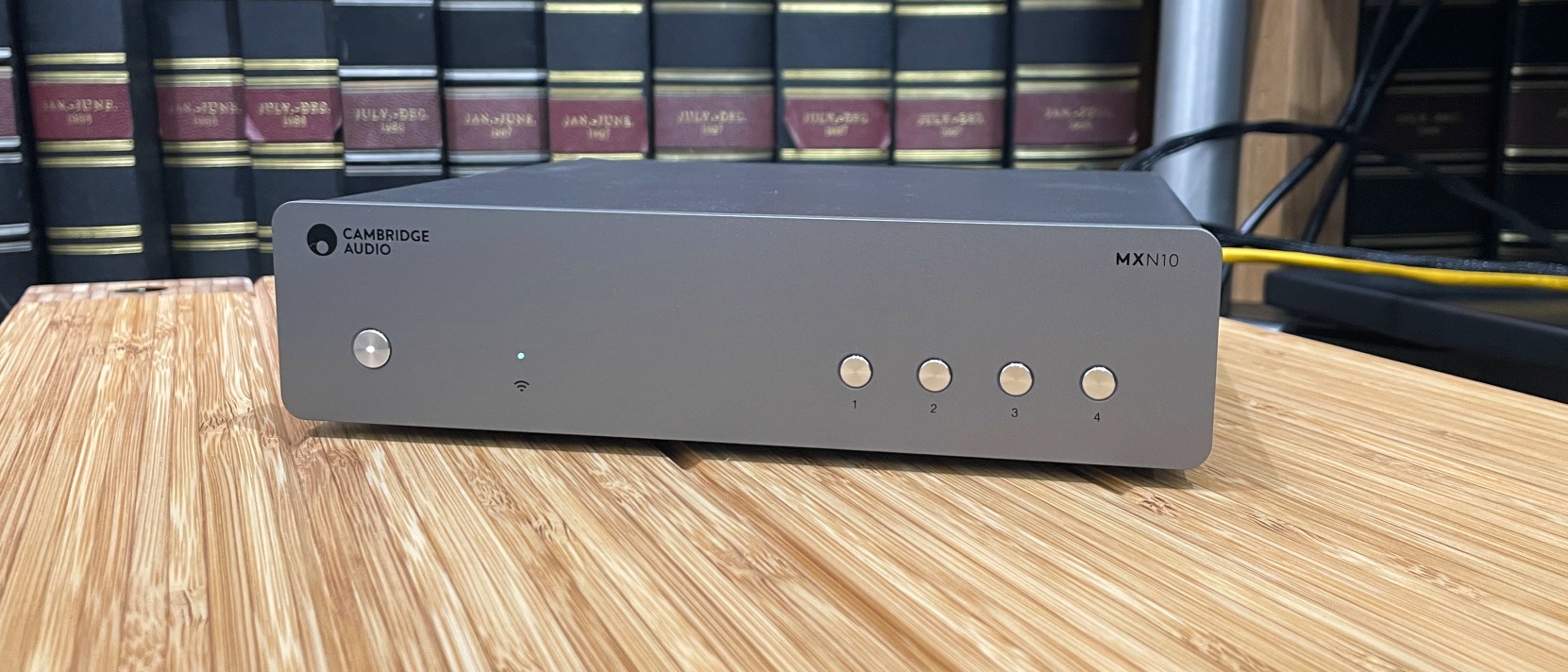What Hi-Fi? Verdict
The appealingly dinky MXN10 offers awesome sound and impressive specs for an entry-level streamer
Pros
- +
Brilliant all-round sonic performance
- +
Fantastically affordable price
- +
Great streaming features and file compatibility
Cons
- -
Somewhat basic physical controls
- -
No MQA support via Tidal
- -
No on-unit display
Why you can trust What Hi-Fi?
Size really isn’t everything. Whether it’s a pair of speakers, a dinky DAC or even a portable Bluetooth speaker, there’s absolutely no guarantee that size in any way correlates with great sound. Big and bulky units certainly have their place, and the trend towards more size equalling more sound is pretty inescapable, but that doesn’t necessarily mean improvements in actual audio quality. In reality, the finest brands in the business often know how to get a lot out of a little.
That’s just as well, because Cambridge Audio’s latest network music streamer is something of a tiddler. Neat, compact and easy to pop onto your hi-fi rack without needing three burly men and a new extension to install, the Cambridge Audio MXN10 is one of the most unobtrusive network players you’ll find, not to mention one of the least expensive. If this little thing has the sonic chops that belie its size and price, its rivals should be quaking in their figurative boots.
Build & design
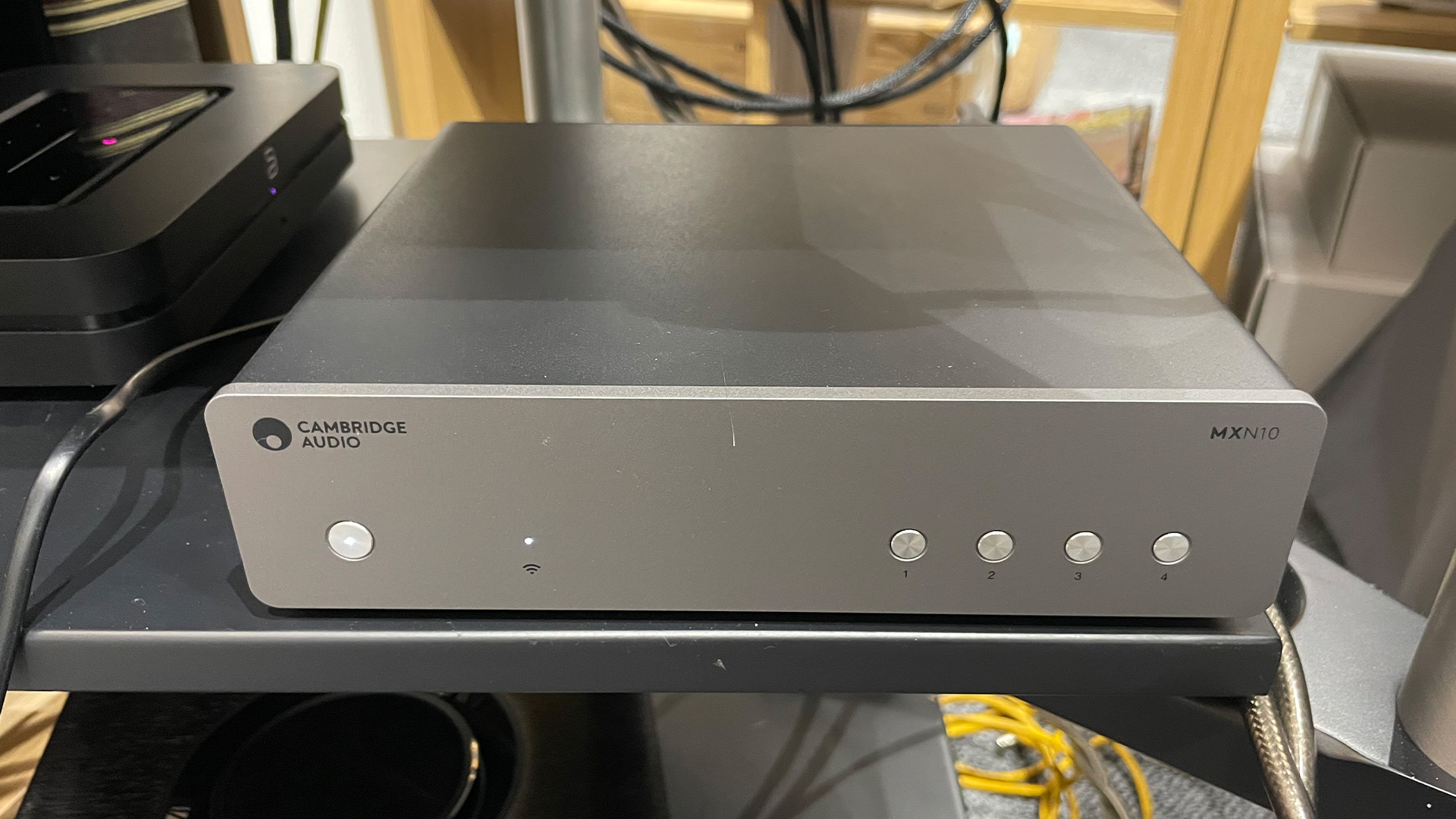
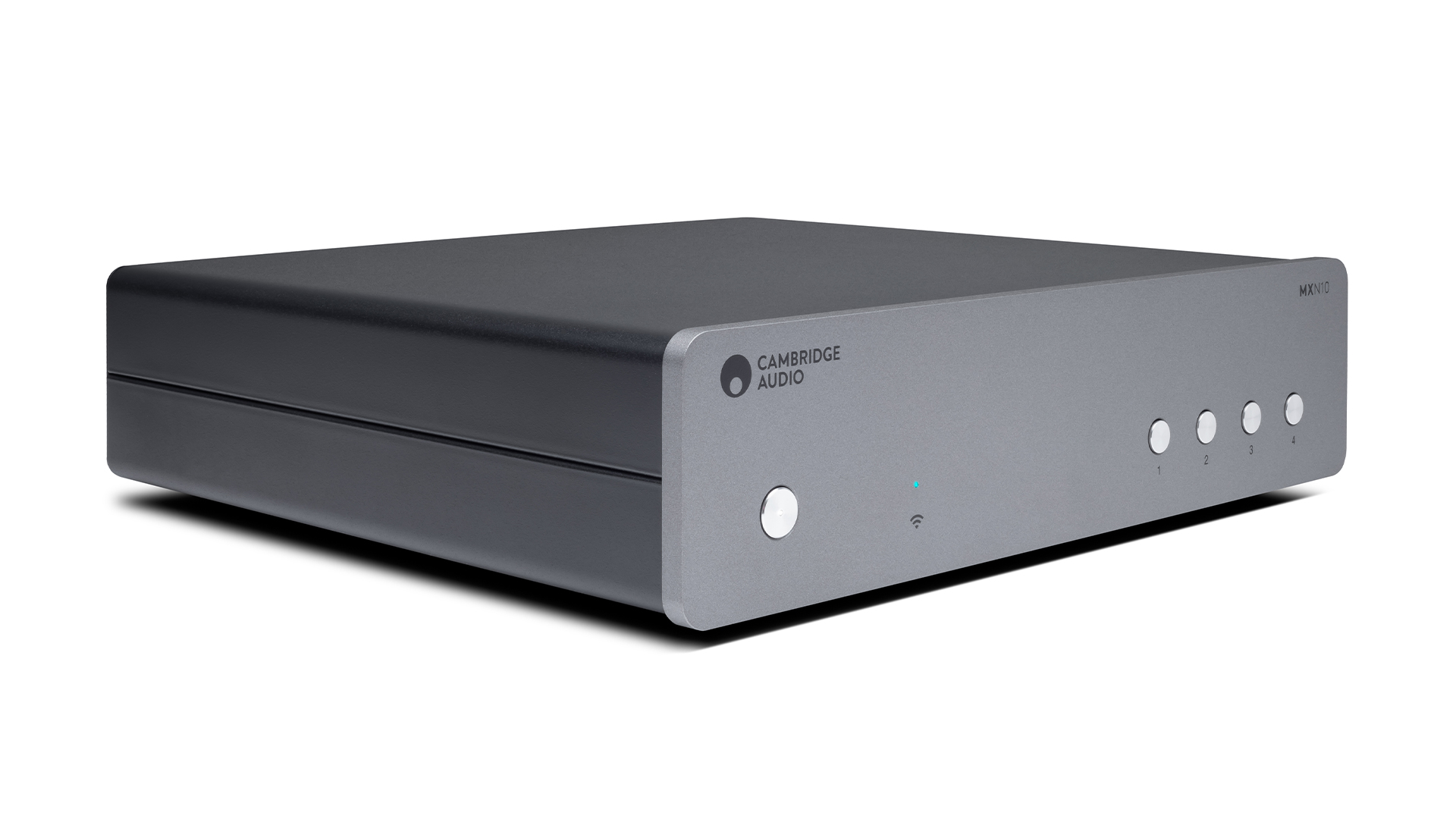
Sources AirPlay 2, Bluetooth 5.0, Google Chromecast, Spotify Connect, Tidal, Deezer, Qobuz, Internet Radio
Network Wi-fi, ethernet
Inputs USB Type A
Outputs Coaxial, optical, RCA line level
Headphone output? No
Max file resolution: 32-bit/768kHz PCM, DSD512
Dimensions (hwd) 5.2 x 21.5 x 19.1cm
Weight 1.2kg
As hinted at above, the MXN10 is a tiny little operator; a far smaller, narrower design than its larger counterparts such as the more traditionally sized Audiolab 7000N and even the fairly compact, Award-winning Bluesound Node (2021). Finished in smooth, inoffensive lunar grey, the MXN10 features four preset buttons on the right accompanied by a clearly demarcated power button and a small white light to tell you whether or not you’re currently connected to the wi-fi. Clean, clear and simple are the watchwords here.
Regarding physical connections, the MXN10 is fitted with an RCA line level analogue output, one coaxial and one optical on the digital side, as well as an ethernet port if you’re planning on plugging the unit directly into your router as opposed to relying on your wi-fi connection. It’s not exactly a party round the back, but there’s enough here to satisfy the essential requirements.
There’s also no remote provided, so unless you’re planning on spending much of your listening time on your knees poking around with on-unit controls, you’ll need to download the dedicated StreamMagic app to control your listening experience. There also isn't a full display, so getting to grips with how this app operates will be essential if you’re going to get the most out of your shiny new network player.
You can control the volume using your mobile or tablet device’s control or from within the supported streaming apps, or you can engage pre-amp mode and control the unit’s volume directly from within the StreamMagic app (as long as you’re using the analogue output).
Features
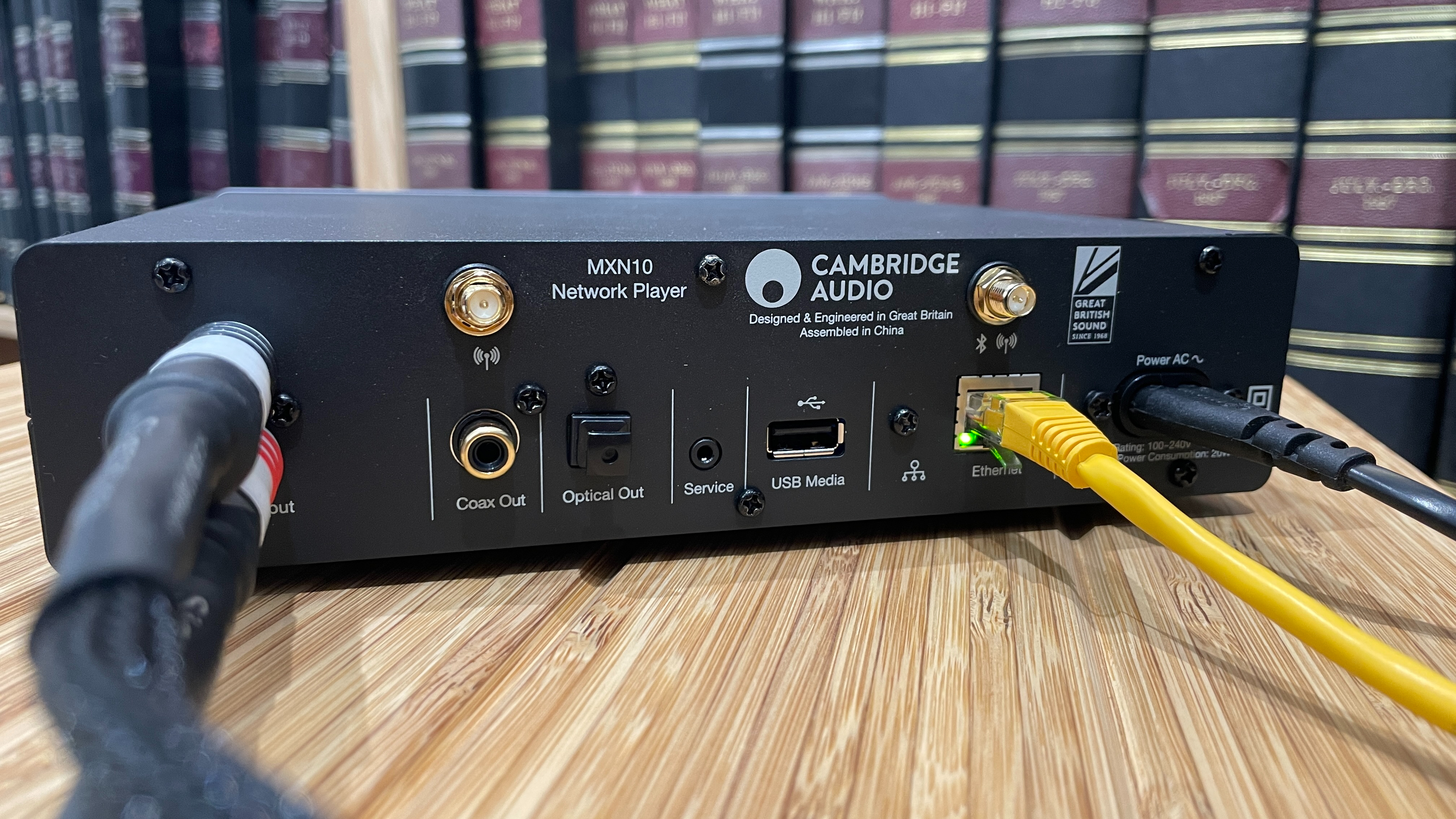
Having a broad array of streaming choices is, obviously, essential for a network streamer, and the MXN10 doesn’t let us down, hosting a plethora of streaming methods and services including Google Chromecast, AirPlay 2, Spotify Connect, Tidal, Deezer and Qobuz, as well as support for Bluetooth 5.0. There’s built-in internet radio which, thanks to MPEG-DASH support, gives high-quality radio streaming across practically any global station you can think of. It can also locate and play any music file stored on the same home network, such as from NAS devices.
The MXN10’s StreamMagic streaming module and app are at the heart of the player, providing the oft-lauded bespoke Cambridge Audio software so that you can stream from your phone. The app is decent, and while music services such as Tidal are never as smooth or intuitive when hosted on such platforms, StreamMagic is more responsive and less frustrating than rival control apps. It’s also incredibly easy to set up; just turn on your new player, download the application and, even if you choose not to create an account and sign in to StreamMagic, the app will simply pick up your MXN10 immediately.
The MXN10, impressively, comes equipped with the ESS Sabre ES9033Q DAC, allowing it to stream high-resolution files of up to 32-bit/768kHz PCM and DSD512 resolution, so you’ll rarely find your dinky streamer caught out by something it can’t give proper justice to. We are slightly perturbed by a lack of native MQA support for Tidal Masters, though. A minor quibble, but a shame nonetheless.
Sound

Cambridge Audio’s recent work in the realm of amplifiers and streamers has been little short of stellar, impressing us with the Award-winning CXA81 integrated amp in addition to the (also) Award-winning CXA61 amp and the (also) award-winning CXN (V2) streamer. Expectations have been set mighty high for the MXN10, even at this relatively low price.
Max Richter’s melancholic slow-builder Never Goodbye is delivered in a spacious and well-organised manner. The MXN10 walks a carefully chosen path between the even-handed, detailed and spacious sound of the similarly-priced Audiolab 6000N Play and the more characterful and energetic balance of the current Award-winning Bluesound Node (2021). It combines the strengths of these talented rivals while adding a dose of dynamic expression and rhythmic coherence that they can’t match.
We like that the Cambridge remains composed when the music becomes demanding, and the way it renders the tone and texture of instruments in such a convincing way. There is a good sense of scale here combined with a surprising dose of authority.
Jay-Z and Justin Timberlake’s collaboration on Holy Grail further reveals the MXN10’s capabilities. Whether it’s Timberlake’s high, soulful vocals or Z’s hard and heavy rapping under a punchy beat, the MXN10 easily has it covered, delivering a real sense of rhythm and swing by the time the verses kick in. If you want to feel the energy and movement the track demands, this is the way to listen to it.
Moving away from purely comparative tracks, we let the Cambridge Audio streamer stretch its legs, with what by now are becoming routinely impressive results. The more we listen, the more the MXN10 reveals its myriad strengths, providing Wu-Tang Clan’s Gravel Pit with bounce and heft before wowing us with a powerful yet clean and organised rendition of Deftones’ Swerve City. Listening to the MXN10 is a pleasure, and one we aren’t keen on ending.
Verdict
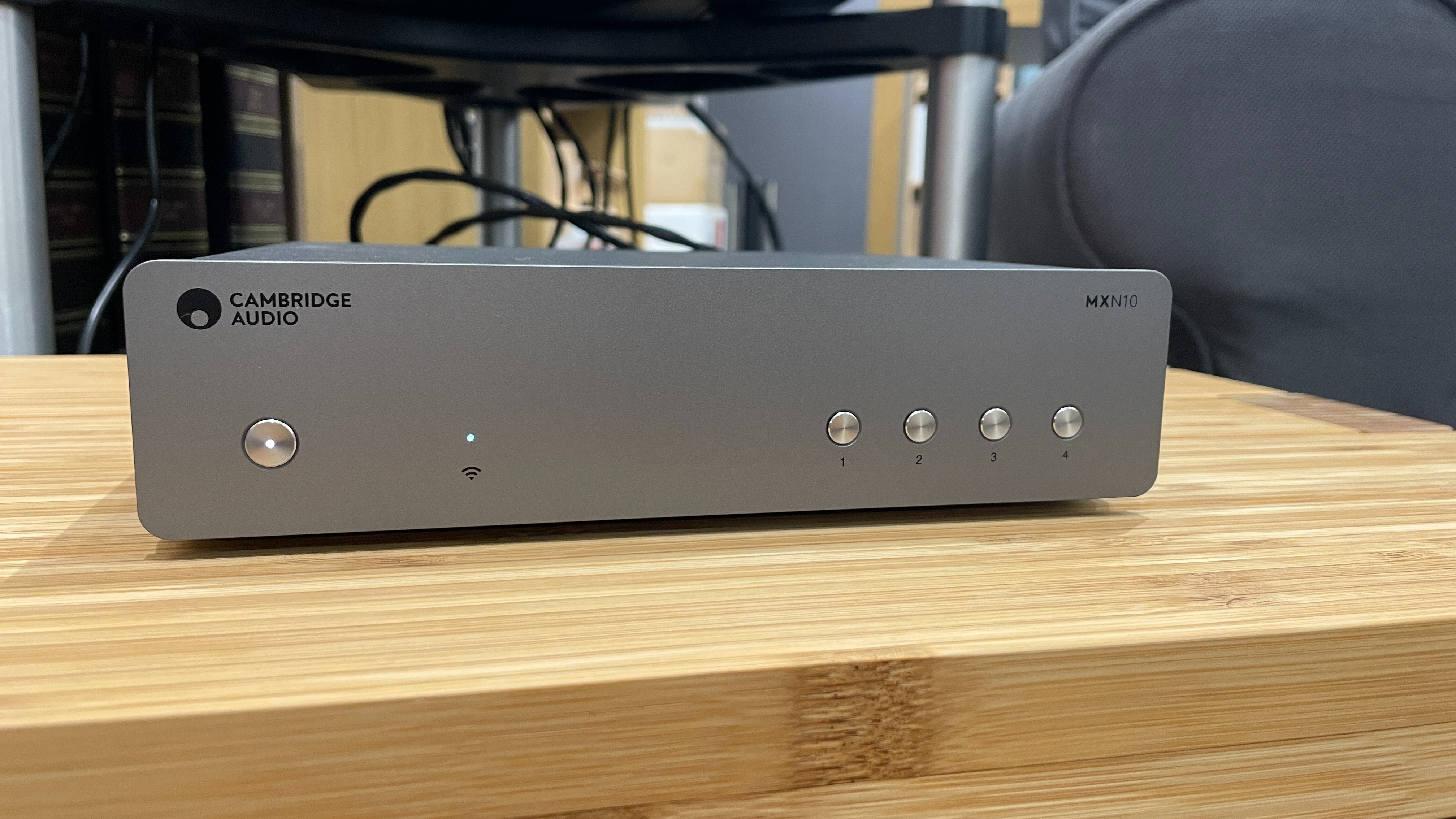
Cambridge Audio has done it again. A small size and an even smaller price tag might have put some niggling doubts in our minds before testing, but those soon fall away once we unleash the MXN10 in our test rooms.
It’s no exaggeration to say that the likes of Audiolab and Bluesound need to be worried. Both of these companies have dominated the entry-level music streamer market for a number of years now, but Cambridge Audio has now crashed that party. Is the MXN10 the finest affordable music streamer on the market? It could well be.
Review published: July 2023. Review updated: November 2024.
SCORES
- Build 5
- Features 5
- Sound 5
MORE:
Read our review of the Bluesound Node (1st Gen)
Cambridge Audio MXN10 vs Bluesound Node: which budget music streamer is best?
Also consider the step-up Cambridge Audio CXN (V2)
What Hi-Fi?, founded in 1976, is the world's leading independent guide to buying and owning hi-fi and home entertainment products. Our comprehensive tests help you buy the very best for your money, with our advice sections giving you step-by-step information on how to get even more from your music and movies. Everything is tested by our dedicated team of in-house reviewers in our custom-built test rooms in London, Reading and Bath. Our coveted five-star rating and Awards are recognised all over the world as the ultimate seal of approval, so you can buy with absolute confidence.
-
Jasonovich This is Cambridge's answer to the plethora of Chinese Streamer DACs flooding the market.Reply
Looks solid, and great choice if you're on a budget.
It's £200 cheaper and without glossy features of the Eversolo DMP-A6 but I wonder how it compares sonically? -
Hifiman Reply
Yes, I agree it is good that CA has an offering at this end of the market. I suspect the real competition lies with the likes of the WiiM Mini, WiiM Pro and the soon to be released Pro Plus, the latter two offering additional functionality to the MXN like Roon Ready and Squeezlite capabilities. And these are between half and a fifth of the price.Jasonovich said:This is Cambridge's answer to the plethora of Chinese Streamer DACs flooding the market.
Looks solid, and great choice if you're on a budget.
It's £200 cheaper and without glossy features of the Eversolo DMP-A6 but I wonder how it compares sonically? -
Friesiansam I don't think the lack of MQA support is much of a con, now that MQA Ltd is in trouble.Reply -
djh1697 Reply
My thoughts exactly. MQA is dead, in a few years, it will be talked about as much as 78 RPM records and 8 track cartidges are today.Friesiansam said:I don't think the lack of MQA support is much of a con, now that MQA Ltd is in trouble. -
Hifiman For what it is worth, I think WiiM (particularly the WiiM Pro Plus at £219) has made the biggest impact in this category in the past year or so. It also seems to be making consumers and other manufacturers reassess what they should be paying/charging for this class of product, a development which seemed long overdue.Reply -
jbee I returned an Audiolab 6000N (the app bundled with this is genuinely heinous) and replaced it with the AXN10. The CA lacks the lovely forward midrange and detail at the top end that the Audiolab has. I wouldn't buy the MXN/AXN if you can afford to buy something with a better DAC. It's entry-level.Reply
